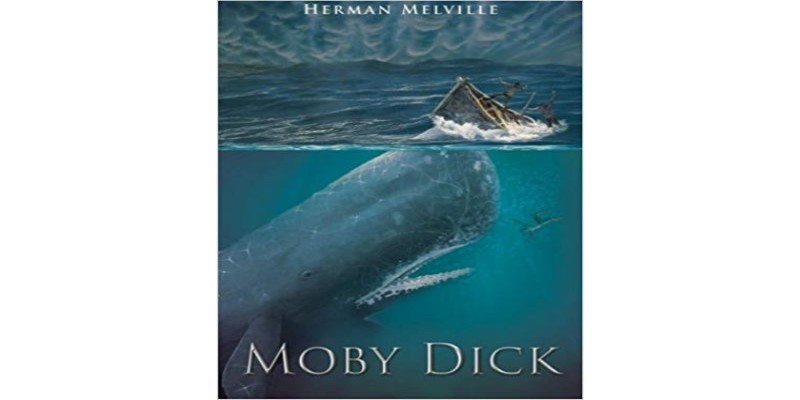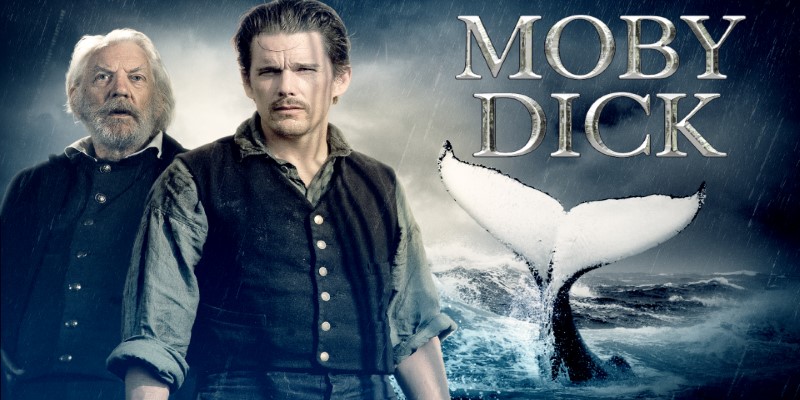"Moby Dick" by Herman Melville is a classic novel that has stood the test of time, captivating readers with its gripping tale of obsession and revenge on the high seas.
Herman Melville's "Moby Dick" underwent a notable journey in its publication history, marked by revisions, editorial interventions, censorship, title changes, and varying degrees of success in terms of sales.
Originally titled "The Whale," Melville's manuscript went through significant revisions at the hands of both the author and British editors. The revisions aimed to refine the narrative and address the concerns of publishers. Melville, known for his meticulous approach to his work, made substantial revisions to enhance the novel's readability and commercial appeal.
Upon reaching British shores, the manuscript faced further editorial interventions. British editors, with an eye on the preferences of the local readership, made adjustments to the text. These changes, while not altering the core narrative, reflected the collaborative nature of the publishing process.
The British edition of "Moby Dick" faced censorship due to its perceived controversial content. In particular, the epilogue, which discussed the deplorable conditions of whalemen, was omitted from the British publication. This censorship was likely influenced by the prevailing sensibilities of the time, reflecting a hesitancy to address certain social issues in literature.
The absence of the epilogue in the British edition altered the reader's experience, providing a different perspective on the characters' fates and the consequences of the whaling industry. It also showcased the impact of cultural and societal norms on the publication of literary works in different regions.
A notable aspect of the publication history involves a last-minute change of the novel's title. Originally titled "The Whale," Melville and his publishers decided to change it to the now-iconic "Moby Dick" just before its release. While seemingly minor, this change played a crucial role in shaping the novel's identity and marketability.
The new title, with its mysterious and evocative quality, added an element of intrigue to the novel. It emphasized the white whale's symbolic significance and contributed to the novel's lasting legacy and recognition.
The story unfolds through the eyes of Ishmael, a young sailor who embarks on a whaling expedition aboard the Pequod, a ship commanded by the enigmatic Captain Ahab. The central focus of the narrative is Ahab's relentless pursuit of the elusive white whale, Moby Dick, who had previously bitten off Ahab's leg. As the journey progresses, the crew encounters various challenges, including the dangers of whaling and the complexities of human nature.
The narrative is interwoven with detailed descriptions of whaling practices, marine life, and philosophical musings. Ishmael's observations and reflections provide readers with insights into the human condition, the power of nature, and the consequences of obsessive revenge.

Exploring the Depths of Melville's Masterpiece
Obsession and Revenge: Captain Ahab's relentless pursuit of Moby Dick serves as a powerful exploration of the theme of obsession and revenge. Ahab's singular focus on avenging himself against the white whale becomes a metaphor for vengeance's corrosive and destructive nature.
Nature's Power: Melville vividly depicts the formidable force of nature through the character of the white whale, Moby Dick, and the vastness of the ocean. The relentless and unpredictable nature of the sea serves as a potent backdrop, highlighting humanity's insignificance in the face of natural forces.
Isolation and Companionship: The characters' isolation at sea forms a poignant backdrop, emphasizing the theme of human connection. The diverse crew aboard the Pequod, each hailing from different backgrounds, highlights the universal need for camaraderie in adversity.
1. Captain Ahab: Captain Ahab, a charismatic yet tormented figure, takes center stage as the driving force behind the narrative. His quest for revenge against Moby Dick reveals the complexities of human nature.
2. Ishmael: Ishmael, the story's narrator, provides a unique perspective as a relatively detached observer. As a lens through which readers witness the unfolding events, Ishmael's narrative voice offers a nuanced understanding of the dynamics aboard the Pequod.
3. Queequeg: Queequeg, a harpooner and Ishmael's close friend contributes to the thematic exploration of friendship and cultural understanding. As a character with a distinct background, Queequeg exemplifies the diversity within the crew.
In "Moby Dick," these themes and characters intertwine to create a narrative that goes beyond a simple tale of whaling, delving into the complexities of human nature, the power of the natural world, and the enduring need for connection and companionship.
"Moby Dick" has left an indelible mark on literature, inspiring generations of readers and writers. Its exploration of existential themes and Melville's vivid storytelling cements its status as a literary classic.
Literary Influence: Numerous writers, including Joseph Conrad and D.H. Lawrence, have drawn inspiration from "Moby Dick." The novel's exploration of the human psyche and its engagement with philosophical concepts have contributed to its enduring legacy.
Cultural Impact: References to Moby Dick are prevalent in popular culture, from movies to music. The novel's themes resonate with audiences across various mediums, demonstrating its cultural significance.
Film Adaptations: "Moby Dick" has been adapted into several films, with varying degrees of success. These adaptations bring the epic tale to the visual medium, offering a new perspective on Ahab's relentless pursuit.
Stage Productions: The timeless themes of "Moby Dick" have also found expression on the stage. Theater adaptations capture the essence of the novel's drama, allowing audiences to experience the intensity of Ahab's quest live.

In conclusion, "Moby Dick" is more than just a tale of a man versus a whale; it's a profound exploration of human nature, revenge, and the relentless forces of the natural world. As you read this great book, you go on a journey that goes beyond time and still connects with the core of the human soul.

By Frederica/Feb 29, 2024

By Eleanor/Dec 02, 2024

By Mark Allen/Feb 12, 2024

By Alice Ellis/Mar 14, 2024

By Peter Evans/Feb 17, 2024
By Frederica/Nov 09, 2024

By Vicky Louisa/Oct 10, 2024

By Alice Ellis/Mar 20, 2024

By Triston Martin/Jun 25, 2025

By Eleanor/Mar 20, 2024

By Eleanor/May 11, 2024

By Eleanor/Mar 12, 2025